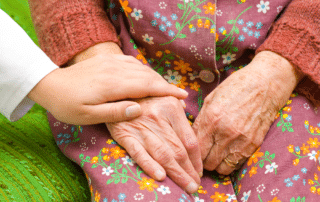Acknowledging that current statewide nursing home regulations are insufficient to meet the physical, psychological, and social needs of residents, Pennsylvania announced a number of changes this past week. One of the most significant being a 35% increase in direct care provided to each nursing home resident – 4.1 daily hours, up from 2.7.
Although lessons learned from the COVID-19 Pandemic contributed to these new nursing home regulations, studies show that raising the number of care hours improves the quality of care, prevents infections, falls, malnutrition, and dehydration. In short, more care creates better outcomes.
Of course, any new law, regulation, or policy comes with its detractors. Unsurprisingly, a long-term care industry trade group – the Pennsylvania Health Care Association (PHCA) – objects to the mandatory increase. That said, their objections are not without merit. Increasing care hours will require an estimated 7,000 new direct care workers, of which there is already a shortage. This added staffing will also cost an additional $366,000,000 annually.
PHCA validly argues that payments to nursing homes by Medicaid, the primary payor source for nursing home residents, have remained flat since 2014 even as costs rise. Between 2016 and 2021 the statewide average cost of nursing home care, as published by the Department of Human Services increased nearly 18%.
However, acting Human Services Secretary, Meg Snead, explained that $366,800,000.00 in funding will be split by the federal government (~53%) and Pennsylvania (~47%). This increased funding should address the concerns brought by PHCA.
While the financial argument brought by PHCA was expected, something I was more surprised to see was an objection by LeadingAge, a Pennsylvania-based senior advocacy group. The group expressed support for the current staffing minimum of 2.7 hours, suggesting that emerging technological advances and innovations may provide resolutions to the ongoing care crisis.
As many of you know, a particular passion of mine is elder care technology and innovation. Large- and small-scale research shows that technological advances can both increase the quality of care and decrease costs. Increased staffing may enhance the quality of care, but it’s unlikely to reduce costs. Also, although I advocate for technological innovation, it is not as a replacement for person-to-person interaction. Rather, my hope is that innovation will allow for technology to attend to the more routine personal care, allowing for caregivers’ time to be spent engaged in more meaningful personal and social interactions with residents.
Watching this debate unfold serves to remind us that, as elder care advocates, there is no one solution. More care is great., but it comes with a cost that our society may or may not tolerate. More funding is terrific, but not if we are unable to find the direct care workers needed. Technological innovation is groundbreaking, but only if it leads to more social engagement, not less.
The team at Rothkoff Law Group recognizes trends and changes in elder care. We use this information and knowledge to advocate for better care, whatever that may mean to an individual or family. If you find yourself struggling to plan for a love one’s care, our team can help you find, get and pay for that care.


